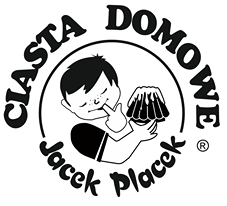For many of us, sweet delicacies are an essential element in the menu and it would be difficult for us to imagine life without them. Our ancestors thought similarly thousands of years ago, although sweets and confectionery products were not yet produced at that time, but the sweet taste of honey, fruit, birch or maple sap was already known. Learn about the history of confectionery and the first sweets in the world!
From honey to sugar
Honey has been a commonly used sweetener since prehistoric times. The ancient Egyptians and Greeks enjoyed its taste. They rolled fruits, nuts, plant stems in it or boiled them in honey - and that's how the original candies were created! At that time, there were already bread ovens and over time, honey began to be added to the kneaded dough, that is, the first confectionery was produced!
However, when it comes to sugar, it appeared for the first time in India, where sugar cane was grown. It came to Europe in the 5th century BC. The Greeks called it "white salt" - in contrast to sea salt, which was then gray in color. But it was the Arabs who were masters in refining sugar and using it to make sweet products. They invented caramel and marzipan. At that time, however, sugar was still a luxury item and was even considered a medicine. It was made of tablets for digestion, with the addition of grains of anise, juniper, cloves or ginger.
Wafer makers and pastry chefs
Who were the first confectioners? In ancient Greece, special wedding cakes called wafers were produced, which were baked between two hot irons. Hence, the first confectioners were called oplatkowcy. Today, this method is used to make waffle dough. After some time, butter and yeast, which were obtained from sludge from the production of beer or wine, began to be used for baking. And so confectionery took on a new format.
However, the real heyday of confectionery took place in Italy. It was there in the city of Salerno in the 11th century that the first confectionery school was founded by the Arabs. They taught there how to obtain sugar from sugar cane, prepare preserves, juices and medicines. Gradually, the main centers of confectionery became the cities of northern Italy, above all Venice and Genoa. It was the Venetian masters who prepared over 300 dishes and decorations of gilded sugar for the arrival of Princess Beatrice in 1492.
Cocoa and sugar factories - next stages of development
The introduction of cocoa from America to Europe in the 16th century had a very significant impact on the development of confectionery and the production of sweets. The local peoples used crushed cacao beans to prepare ritual drinks. The Europeans, however, mixed them with milk and that's how the chocolate drink was created, and in the 19th century the first chocolate bar.
And when did sugar stop being a luxury good and could be used on a large scale? – Which also benefited confectioners. Initially, this product was obtained only from sugar cane, which was imported to Europe from Asia and America. In the 16th century, the first sugar factory was founded in Germany. However, this commodity was still very expensive. It wasn't until the 19th century that sugar was produced from sugar beets - they were grown in Europe and thanks to this, the costs became much lower. From that moment on, sugar ceased to be a commodity for the rich, and confectionery products could be offered to a wider range of customers. At that crucial time, factories of famous confectioners, such as Wedel and Blikle, were established in Poland.
The world of sweets today
Nowadays, everyone has easy access to sweets and sweet pastries. We have a wide selection of very different products and the trick is to make the right choice for yourself. And many of us want to eat healthy and keep a slim figure. Therefore, responding to the needs of customers, some manufacturers of sweets and confectionery products replace ordinary sugar with healthier xylitol, date syrup or a mix of ground sweet fruits. And that's how exemplary diet bars are created.
Also in the confectionery industry itself, the trend of using only natural ingredients is becoming more and more popular, e.g. real eggs, preserves, chocolate, instead of artificial additives or preservatives. Thanks to this traditional formula, the cakes retain their unique, home-made taste and aroma - they are "as before". And just such pastries, prepared according to family recipes, are offered by ours => Jacek Placek's confectionery.



